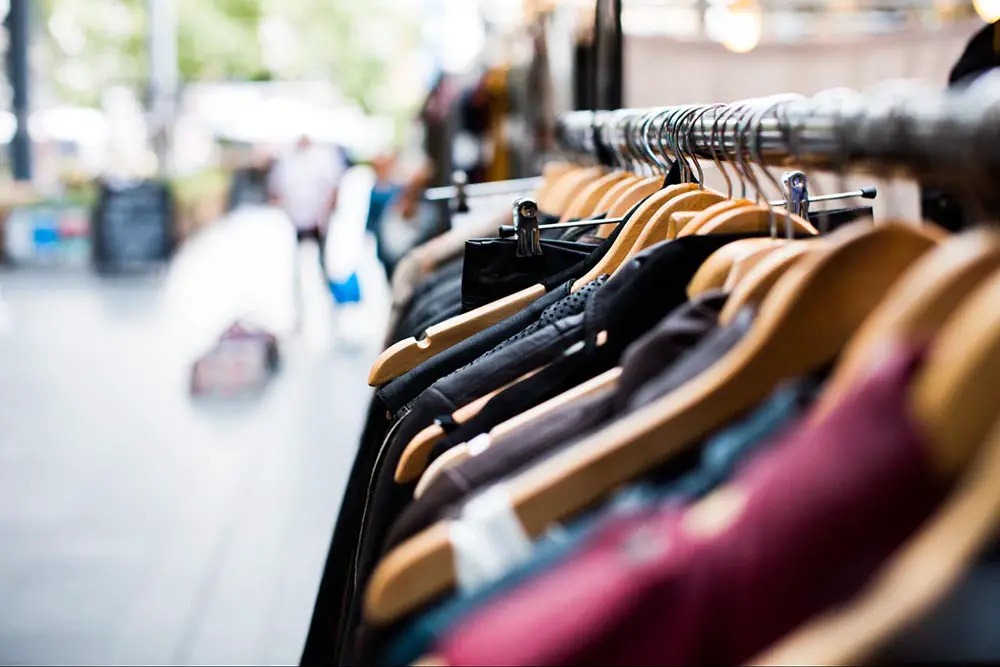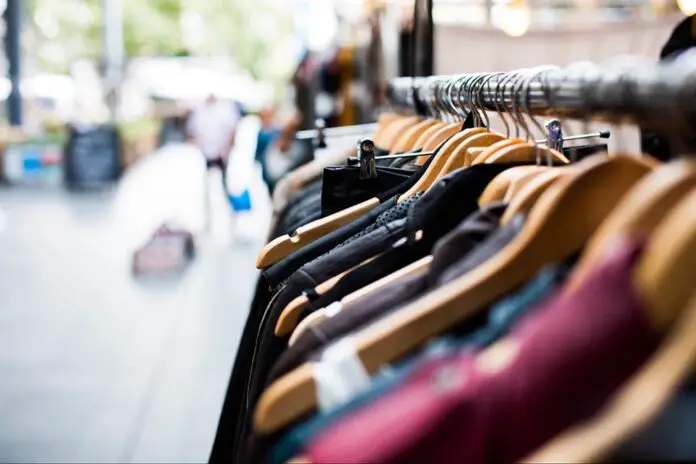In the bustling heart of our modern consumer-driven society, there exists a phenomenon that has revolutionized the way we dress, shop, and perceive fashion.
The fast fashion business model, a relentless force in the fast fashion clothing industry, has ushered in an era of lightning-fast production and distribution, forever altering the landscape of our wardrobes.
What is Fast Fashion?
It thrives on the premise of swift, ever-revolving collections that cater to the insatiable hunger for the latest trends in the fast fashion market. Fast fashion has, in its own way, democratized style, making fashion accessible to the masses like never before. However, as we delve deeper into the dynamics of the fashion industry, it becomes evident that there is an urgent need for a paradigm shift towards sustainable fashion. Join us as we peel back the layers of this fascinating trend, exploring the rise, trends, consequences, and alternatives in the world of fast fashion. In this exploration, we’ll discover not only the allure but also the undeniable complexities that lie beneath the surface of those chic, budget-friendly ensembles that fill our closets.

The Rise of Fast Fashion
With roots tracing back to the Industrial Revolution, the fast fashion industry represents a significant shift in clothing production. During this era, traditional craftsmanship gave way to mechanized processes, ushering in mass production. The mid-20th century saw the rise of fast fashion companies and fast fashion retailers, which transformed fashion into an accessible, off-the-rack concept. Fast fashion’s democratization of style liberated it from haute couture exclusivity, allowing people to select and wear the latest trends with ease. This transformation marked the industry’s evolution into a mainstream cultural force, altering the way we engage with fashion.
Zara, H&M, and Forever 21 have been pioneers in the fast fashion segment of the global fashion industry, reshaping the garment industry with their swift production and affordable prices. They’ve made fashion accessible to a global audience, blurring the line between high fashion and everyday wear. Their emphasis on setting trends, speed, and affordability has transformed the fashion landscape, motivating competitors within the global fashion industry to meet changing consumer preferences and permanently changing the garment industry.
Fast fashion thrives on speed, swiftly translating runway designs to store shelves and capitalizing on the demand for cheap clothes. This agility isn’t just logistical; it’s a strategic edge, helping brands stay in tune with ever-changing consumer tastes and navigate the relentless fashion cycle. In this dynamic landscape, the ability to adapt swiftly to evolving trends is crucial. Fast fashion brands have honed this skill, ensuring that the latest styles, whether seen on social media or worn by celebrities, reach eager shoppers within weeks, if not days. This responsiveness to consumer preferences defines fast fashion, keeping the industry in a constant state of readiness to meet the next wave of fashion demands.

Trends in Fast Fashion
Fast fashion, driven by the fast fashion brand model, thrives on frequent fashion cycles, where stores receive fresh collections of trendy clothing every few weeks. This strategy entices shoppers to make regular purchases to keep their style current. The allure of staying trendy motivates customers to visit stores or shop online frequently, leading to more frequent wardrobe updates. In this fast-paced fashion landscape, the idea of wearing something only a few times before it’s out of style has become the norm, highlighting the rapid and disposable nature of fast fashion.
Fashion’s approach to seasons has evolved, with clothing brands increasingly embracing the concept of disposable fashion. While trends used to align with specific seasons, today’s fashion constantly introduces new styles, blurring the lines between spring, summer, fall, and winter fashion. This ongoing introduction of fresh designs fuels consumer demand for novelty and staying stylish. Shoppers now have year-round access to new styles, creating a more immediate and dynamic fashion experience that challenges traditional seasonal boundaries.
Social media has a big impact on the fast fashion model and the promotion of trendy clothes. Platforms like Instagram, TikTok, and Twitter amplify these trends, thanks to influencers and celebrities. When they showcase the latest styles, they quickly reach a global audience. Through posts, videos, and threads, social media’s reach is unmatched. This constant exposure to new trends makes it easy for fashion enthusiasts to adopt them. In essence, social media drives the fast fashion model into the spotlight and changes how people engage with fashion, creating a cycle of rapid trend adoption and turnover.
Consequences of Fast Fashion
Environmental Impact
- Pollution and Waste
The impact of fast fashion is profound when it comes to pollution and waste, with the fashion industry responsible for 10% of global carbon emissions. - Resource Depletion
Rapid production within the fashion industry depletes resources like water and fossil fuels at an alarming rate, contributing to environmental degradation.
Labor Exploitation
- Sweatshops and Working Conditions
Fast fashion’s demand for low-cost fashion production often results in exploitative labor practices, with garment workers in sweatshops enduring poor conditions. - Ethical Concerns
Ethical concerns arise due to the lack of transparency in supply chains and disregard for workers’ rights in some cases.
Economic Ramifications
- Impact on Local Artisans
Local artisans and traditional craftsmanship face challenges in competing with fast fashion’s pricing and production speed. - Effects on Sustainable Brands
Sustainable fashion brands find it difficult to compete, despite their ethical and eco-friendly practices.

Alternatives to Fast Fashion
Embracing Slow Fashion
- Principles of Slow Fashion
Slow fashion stands apart from fast fashion, rejecting the disposable mindset. It treasures quality and timeless pieces over fleeting trends, seeing clothing as an investment. It advocates sustainability, ethical practices, and mindful consumption. Through an emphasis on quality and holistic approaches, it seeks to lessen fashion’s environmental impact, promoting responsible and sustainable values. - Mindful Consumption
In sustainable fashion, mindful consumption is crucial, valuing each garment and promoting maximum use. Unlike fast fashion, it emphasizes long-term value, versatility, and durability. Consumers focus on utility through styling, and reducing waste. This supports eco-friendly materials and ethical manufacturing, lessening environmental impact. Ultimately, mindful consumption benefits individuals adopting a sustainable fashion approach, reducing the industry’s footprint and promoting ethical practices.
Sustainable and Ethical Practices
- Eco-friendly Materials
Eco-friendly materials like organic cotton and recycled fabrics are driving positive change in clothing consumption, promoting sustainable fashion choices that benefit the environment and consumers alike. Organic cotton avoids harmful pesticides and chemicals, reducing the environmental impact of clothing production. Recycled fabrics, derived from items like post-consumer plastic bottles and discarded textiles, cut waste and save resources in the fashion production process. These sustainable materials are not only environmentally responsible but also stylish and durable, proving that fashion can be both eco-conscious and trendy. Sustainable brands lead by example, creating lasting, stylish clothing while minimizing harm to the environment and aligning with consumer fashion preferences and values. - Fair Trade
Fair trade practices are crucial for ensuring the ethical treatment of workers throughout the supply chain. They prioritize dignity, rights, and well-being and start with fair wages, guaranteeing basic needs are met and families are supported. Fair trade also bans child labor, ensures safe working conditions, and promotes gender equity. These practices promote social justice and sustainability in fashion, creating an environment where workers are respected, protected, and empowered.
Nurturing Emerging Responsible Brands
Supporting emerging sustainable brands reshapes the fashion industry. They focus on ethics and eco-friendliness, standing apart from fast fashion. Consumer support boosts their growth, particularly in a market dominated by less sustainable giants. These brands emphasize diversity and inclusion, leading to more inclusive fashion lines. Their agility lets them adapt swiftly to eco-conscious trends. Supporting sustainable startups means actively driving fashion’s transformation, and promoting diversity and innovation in the industry.
Consumer Choices and Actions
Before buying, research brands online to discover their values and sustainability. Check their website, reviews, and certifications. Knowledge helps identify genuine commitment and supports ethical, eco-friendly fashion. Individuals drive positive change, transparency, and a more sustainable fashion industry.
Supporting sustainable brands means aligning consumer choices with ethical and eco-friendly values. It promotes responsible consumption and encourages brands to prioritize the planet and fair practices. This support fosters ethical production and sends a message for industry change.
Reducing clothing waste is possible through practices like recycling, upcycling, and donating. These approaches divert items from landfills, extend clothing lifespans and benefit communities. They promote a circular fashion economy, minimizing environmental impact and conserving resources. Individuals can actively participate in this sustainability effort.

Future Outlook
Consumers are reshaping the fashion industry, prioritizing sustainability and ethical practices. This shift reflects a growing awareness of fashion’s environmental and social impacts. Shoppers now seek eco-friendly materials, ethical labor, and transparent supply chains. They demand accountability, pushing brands to reduce waste, cut carbon footprints, and adopt circular fashion. This consumer mindset is driving innovation and redefining the industry’s practices.
The future of sustainable fashion is evolving through innovation and technology. This includes eco-friendly materials and transparent supply chains. Emerging technologies are introducing lab-grown textiles and recycled fabrics, reducing reliance on traditional resources. Tools like blockchain enhance transparency, ensuring ethical practices throughout the supply chain. Sustainability is no longer a trend but a lasting force shaping the fashion industry for a more eco-conscious future.
The fashion industry is shifting towards responsibility and sustainability. Consumer awareness of environmental and social impacts is driving brands to adopt ethical practices and eco-friendly materials. This transformation includes circular fashion, transparent supply chains, and innovative sustainable textiles and technologies. These changes reflect a growing commitment to ethical and sustainable values that will shape the fashion industry’s future.
Takeaways
Our journey through the world of fast fashion has illuminated its complexities and the resulting consequences. It’s crucial to recognize that each individual has the power to effect change by choosing a sustainable and ethical fashion. When we unite our choices and actions, we hold the collective potential to shape the fashion industry’s future, steering it towards enhanced sustainability and heightened social responsibility.
##
With love,
FWO



